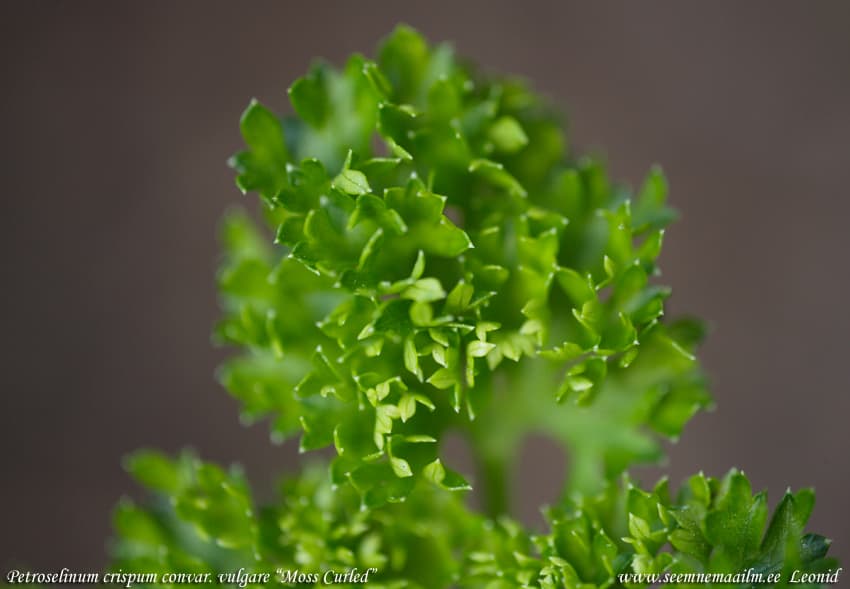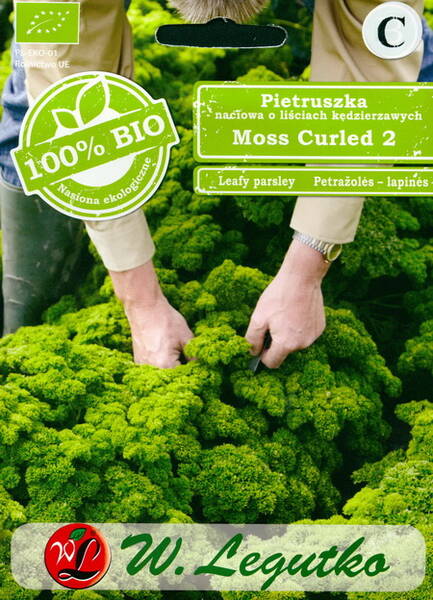Ex Tax: 1.47€
A leafy curled parsley. The vegetation period is between 80-90 days (spring / summer crop) and between 150-180 days (autumn harvest). The dark green leaves, can be frozen or dried. Grows best in sandy loam soils.
Weight per 1000 seeds = 1,2-1,4 g.
Number of seeds in 1,0 g = 715-830.
Parsley is a more cold-resistant crop than carrots, and with some cover it can overwinter in the garden and give greens in early spring. You can drive greens from parsley roots even in winter at home.
There are two groups of parsley varieties - leaf and root. The root varieties of parsley are characterized by a smooth, tap root, not branched. The greens of both groups of varieties are approximately the same, however, many people recognize the greens of curly parsley as beautiful, but less aromatic.
Parsley prefers loose, fertile soil with a soil reaction close to neutral. For sowing, it is better to prepare the garden in the fall. In the fall, you should dig deep into the soil, and in the spring, dig it up again and loosen it well. Under the autumn digging, half a bucket of manure mixed with 2 tablespoons of double superphosphate and 1 tablespoon of potassium sulfate and possibly one glass of lime per 1 sq. meter. On heavy loams in the fall, an additional 2 liters of small sawdust should be added, which are embedded in the soil with a cultivator to a depth of no more than half a bayonet. In the spring, another half of a bucket of well-rotted manure or peat compost with manure mixed with 1 tablespoon of nitrophoska or half a tablespoon of potassium or sodium nitrate and a half-liter can of wood ash per 1 sq. meter.

Eng.: Leaf Parsley (tops). Suom.: Kähäräpersilja. Sven.: Persilja Mosskrusig. Bot.: Petroselinum crispum convar. vulgare.
Parsley seeds germinate slowly, so they are soaked in cloth, gauze for 3-4 days. As soon as some of the seeds hatch sprouts, they are slightly dried and sown into grooves to a depth of 0.5-1 cm.The distance between the grooves is 15-20 cm, between the plants - 2-3 cm.Sowing time - as soon as the ground is ripe - the second half April. Additional seeding time for greenery is early July. The bed can be closed with a film so that there is a space of 2-3 cm between the film and the soil. As soon as shoots appear, the film is removed.
During the growing season, the aisles should be loosened and 2-3 additional fertilizing should be carried out in the grooves in the aisles. Top dressing is carried out at an early stage of the growing season so that the greens do not accumulate large amounts of nitrates and are not stained with mullein infusion.
In autumn, select non-standard parsley roots thinner than 1 cm in diameter, or planted in summer. Thin root vegetables overwinter better. They are used to produce greens in early spring and seeds in autumn. Root crops are planted either immediately, or they are dropped in until spring, and in the spring they are planted "up to the shoulders", close to each other in a row, on a prepared bed in advance. The distance between the rows is 15-20 cm.
For the winter, it is better to lightly cover the parsley with pine spruce branches, since it does not crumble like spruce, and protects from mice, and also retains snow. Planting in the spring allows you to better prepare the soil of the garden bed. It is advisable to carry out two or three nitrogen-potassium dressings. The result: in early spring, you get great greens.
It must be borne in mind that in the second year, parsley quickly turns into an arrow. Plants should be tied up so that they are not scattered by the wind.
In the second half of September, simply pull out the parsley stalks by the roots and lay them on a mat in a cool room for seeds ripening and drying. Rub the dried umbrellas between your palms to separate the seeds. When sprinkling the seeds in a thin stream, blow out fine litter. The seeds obtained are enough for both planting and seasoning for food.
Re-plant uncolored thin parsley roots for greens in early spring and seeds in fall.












